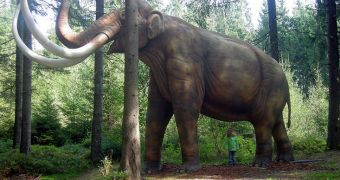After more than 10,000 years of absence, the mammoth may finally return to roam the Earth. The animal, which went extinct at the end of the Younger Dryas, may be engineered from the information contained in DNA found in frozen cells recovered from the Arctic permafrost.
At this point, there is no guarantee that the research group seeking to accomplish this will succeed, but, if they do, then the achievement would undoubtedly become one of the most impressive in science.
The group is confident in its success due to the fact that it has developed a technique to efficiently extract DNA from frozen cells. The genetic material recovered in this manner is then used with cloning technology to create a new individual.
Tissue samples were obtained in the summer of 2010 from a frozen mammoth carcass discovered in Siberia by a team of Russian experts. They are being preserved in a research laboratory until they can be used in cloning.
“If a cloned embryo can be created, we need to discuss, before transplanting it into the womb, how to breed [the mammoth] and whether to display it to the public,” explains Akira Iritani.
“After the mammoth is born, we'll examine its ecology and genes to study why the species became extinct and other factors,” adds the expert, who is a professor emeritus at the Kyoto University.
He and his team are in charge of the efforts to revive mammoths. The Japanese experts believe that, if everything goes according to plan, a live mammoth could be born within five to six years tops.
The group plans to use an elephant as a surrogate mother for the mammoth. Cellular nuclei from the extinct beast will be inserted into an elephant egg cells, and then implanted into a female elephant.
The two creatures are theoretically similar enough to allow for a complication-free live birth, the scientists believe. They have been trying to clone a mammoth since 1997.
One of the most common problems they came across was the lack of usable mammoth cell nuclei. All the sample they retrieved from muscles or bones had their DNA damaged beyond use. A breakthrough came in 2008, when the samples that are to be used in the new study were found.
“The mammoth has no defects except that its tail was bit off. In terms of its state of preservation, this is the world's most valuable discovery,” says of the 2008 finding Alexei Tikhonov.
The expert is the deputy director of the Zoological Institute of the Russian Academy of Sciences, which keeps the samples in storage until they are used, Daily Galaxy reports.

 14 DAY TRIAL //
14 DAY TRIAL //